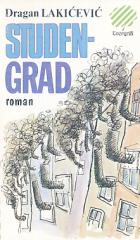
Sabrana djela I: Na Drini ćuprija
A Bridge on the Drina is a novel by Ivo Andrić that was first published in 1945. The action takes place in Višegrad, a small Bosnian town, and the central motif is the bridge on the Drina, which is a symbol of culture, history and the destiny of the peopl
The novel follows the history of the bridge on the Drina through several centuries, from its construction in the 16th century, during the Ottoman rule, until the 20th century. The bridge was built by the order of Vizier Mehmed Pasha Sokolović, who was originally from that area. Through stories about ordinary people, crimes, loves and destinies, Andrić shows life in this area in different historical periods.
The focus of the novel is the daily life of people who are tied to the bridge, including tourists, merchants, peasants, as well as soldiers and the government. The bridge is the central element in the lives of all the characters, many important and dramatic situations take place on it. Through the characters, Andrić shows the conflicts between different cultures, religions and peoples who have lived in that area over the centuries.
The novel also explores the fate and psyche of the people, their fears, hopes and sufferings, through the depiction of various historical events such as the Ottoman occupation, Austro-Hungarian rule, the Balkan Wars, and up to the First World War. Destinies that reflect great historical changes are always taking place on the bridge.
Although the bridge, as a physical structure, lasts for centuries, the people who come and go, as well as the changes that occur in society, show the effects of time on peoples, mentalities and everyday life.
The novel "On the Drina Bridge" is a work that deeply explores identity, community and conflict in the Balkans, as well as the symbolism of the bridge as a place of union and separation. Andrić uses the bridge to show how history and fate shape the lives of ordinary people, while at the same time making the bridge a central place where the destinies of past and future generations intertwine.
No copies available
The last copy was sold recently.





